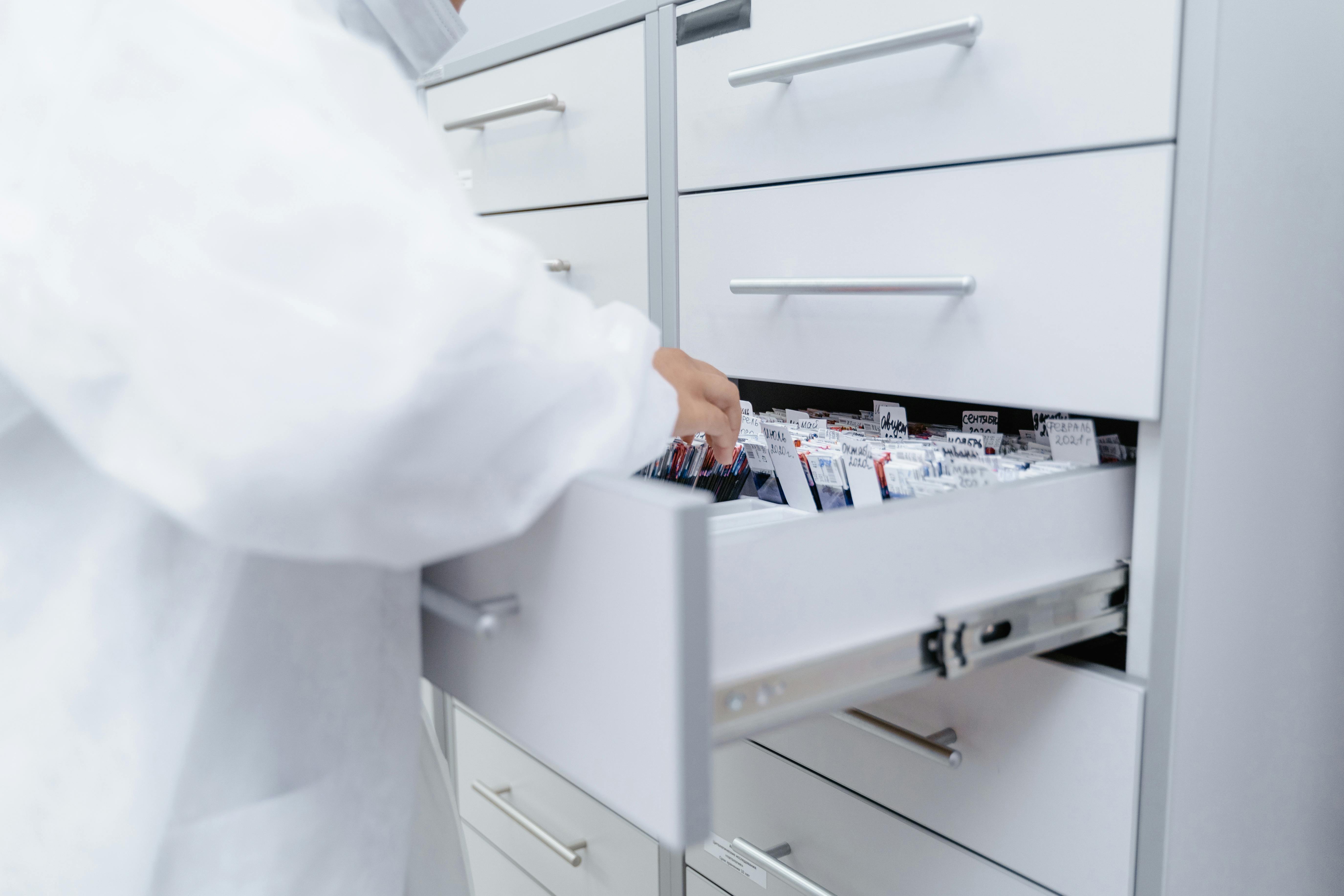
IVF
IUI vs. IVF vs. ICSI vs. PICSI—What is What?
September 16, 2022
Last updated:
November 12, 2024

Between IUI vs. IVF vs. ICSI vs. PICSI...looking into fertility treatments can feel a lot like you're trying to make sense out of all those noodles floating around a bowl of alphabet soup.
At first glance, it seems like IUI vs. IVF are similar. They both have an I in them...so maybe they're related? And what's with ICSI and PICSI? Is that P just a typo? Don't worry, you don't need a crystal ball to figure all of this out. Consider this your secret decoder ring for all those fertility treatment acronyms.
There are plenty of new terms to learn when you're starting the fertility journey—or at least terms to dig out of your brain from your high school science class days. But there are four major acronyms that tend to come up when you sit down with a fertility doc to talk options.
IUI
Short for: Intrauterine insemination (although it's also sometimes called artificial insemination)
How it works:
- IUI involves donated or a partner's sperm being placed in the uterus. Sperm are "washed" (essentially, sorted to weed out the strongest, best swimmers) and injected through a catheter up through the cervix directly into the uterus, at the time of ovulation. That's the end of expert intervention when it comes to IUI—the goal is for fertilization to occur in the body, up in the fallopian tube, in the same exact way it would if the sperm swam there on its own.
- This procedure may be combined with medications to induce ovulation, such as Clomid or Letrozole, typically given for five days, or medication prescribed after the procedure, like progesterone (which can be used during IUI or IVF).
Who does it: Usually a reproductive endocrinologist, though it can also be performed by a general OB/GYN.
IVF
Short for: In vitro fertilization
How it works:
- IVF typically involves stimulating the ovaries with medications in order to boost the number of eggs you produce and mature them enough to the point of almost ovulating. However, donor eggs can also be used with IVF. If a donor egg is used, the mother-to-be will typically take medications meant to sync her cycle with that of her donor.
- Next step? A mom-to-be or her donor has to undergo minor surgery to retrieve the eggs. "The eggs are collected using ultrasound guidance, using a syringe to withdraw the eggs from the ovaries," says Dr. Mary Jane Minkin, M.D., a clinical professor of obstetrics, gynecology and reproductive sciences at the Yale School of Medicine.
- Eggs are later mixed with donor or a partner's sperm in a lab—this process is called insemination.
- If insemination is successful and the embryo continues to mature after a few days, the embryo (or sometimes more than one, depending on your situation) is transferred directly into the uterus by a specialist, again using a catheter. Some first undergo genetic testing to ensure the embryo is chromosomally normal and/or isn't a carrier for certain conditions. If all goes well, the embryo will implant in the uterus, getting you pregnant.
Who does it: The retrieval and embryo transfer portions of IVF are typically performed by a reproductive endocrinologist, while the insemination process is handled by a clinical embryologist in the fertility clinic lab.
ICSI
Short for: Intra-cytoplasmic sperm injection (usually pronounced ick-see)
How it works:
- The ICSI procedure is a part of the IVF cycle that's often used in cases of male factor infertility, such as poor sperm count or quality, says Dr. Alyssa Dweck, M.D., an OB/GYN at CareMount Medical in Westchester County, NY.
- A male partner's sperm is usually collected into a collection cup, though it may be retrieved surgically by a urologist from a male partner's testes or epididymis (that's a tube in his testicles where sperm collects).
- It is then studied in a lab to determine which specific sperm cell (sometimes called the spermatazoa) is the best candidate for potentially inseminating the eggs retrieved during the IVF process. "This technique allows a single sperm to be injected directly into a mature egg," Dr. Dweck says, hopefully resulting in a fertilized egg.
- The fertilized egg develops into an embryo, which is then placed in the uterus via the IVF process. And you know where this is going now, right?
Who does it: The ICSI process is typically performed in a fertility clinic or center's lab by an embryologist.
PICSI
Short for: Physiological intra-cytoplamsic sperm injection (usually pronounced pick-see)
How it works:
- No, that P isn't a typo. PICSI is essentially ICSI with an extra step, says Dr. Jaime Knopman, M.D., a reproductive endocrinologist at New York fertility clinic Colorado Center for Reproductive Medicine (CCRM).
- This procedure involves adding a special enzyme to the sperm to enhance insemination chances, but it otherwise mirrors ICSI. After an embryo forms, it's transferred to the uterus, and all fingers crossed…pregnancy hopefully occurs.
Who does it: Like ICSI, PICSI is typically performed by lab specialists called embryologists.
Consider artificial insemination and fertilization costs
It all depends on the treatment type. Something like IUI can cost you around or just over $400. Where on the other hand, IVF can cost upwards of $8,000, not including the required medications or ICSI treatment that can range from an additional $1,000 - $2,500. Surrogacy can exceed $100,000.
With all of these different methods of insemination and fertilization, these processes can’t be cheap, or can they? This lies in the hands of your health insurance coverage.
If you’re looking to become pregnant and require one of these methods, you may save yourself a decent chunk of change by opting for a plan that covers fertility treatments. While each plan will vary as to what degree of coverage is provided, don’t forget to read the fine print before choosing your insurance plan.
The insurance policy carrier will determine what all is included. For example, if the man is the carrier of the policy, the plan may include fertility treatment for him but not for the female partner including the main event of the actual insemination.
If your employer doesn’t offer insurance that covers fertility treatments, you should take the issue to HR or a higher power to see if it’s possible. If it’s a large organization that has other employees dealing with the same issues, it may be something they’d be willing to change.
You should also conduct some research around grants offered by non-profits. There are many that exist to help with the cost of insemination.
Out of pocket expenses
If you are unable to obtain a plan that fully covers the artificial insemination process from start to finish, you’ll likely find yourself fronting the artificial insemination cost which can be an accrual of numerous things.
Medications
These are required to ensure that the woman is ovulating one or more eggs at the right time. There will typically be medications prescribed at each cycle and also one used to induce ovulation (otherwise known as a “trigger shot”). These medications vary in cost. For IUI, a prescription could cost you as little as $10. For IVF, depending on your insurance coverage, you could rack up a cost of $5,000 or more.
Bloodwork and check-ups
During the process of artificial insemination, it’s important that the woman is frequently monitored and evaluated. Not only will this require doctor appointments, but also blood work that can monitor hormone levels and the status of follicles throughout the process. While these costs vary, you might see costs of $500-$1,000 during each cycle.
Insemination
The event you’ve been working so hard for, the actual process of artificial insemination may cost around $150 to $400. However, sometimes an additional injection is suggested the day after the initial to improve success rates, so double that number if your doctor recommends this approach.
Additional fertilization costs
There is a chance you might need some additional assistance throughout the process, which may — you guessed it — make things more expensive.
Embryo testing and freezing
Embryo testing for chromosomal abnormalities can cost $1,000 or more. Depending on timing or if you want to use them at a later date or after a lengthy transfer protocol, embryos will require freezing. This can cost a couple of hundred dollars. Freezing for a year will cost closer to $800.
If you use a frozen embryo, the transfer will also come with a cost. The average cost to transfer a frozen embryo is $3,000-$5,000.
Egg donors and sperm donors
If you need an egg donor, you’re looking to endure a cost for just one cycle somewhere between $25,000 and $30,000. If you need a sperm donor, on the other hand, it’s significantly cheaper. On average, it can be about $15,000 per cycle.
Gestational carriers
In the event that you need a gestational carrier, this will put you in the upper tier or near the top range of the total cost of insemination. This cost can range anywhere from $50,000 to $100,000.
Total cost
Again, costs will vary depending on the treatment. It’s best to consult with your doctor to determine which route you should go and what additional costs may be required in your situation. Some fertility treatment costs can be offset by insurance and potential grants.
To ensure you can afford IUI, IVF, or whatever fertility treatment you might need, it’s best to consult with your fertility doctor beforehand so you can determine how much you will have to pay in the end.
Summing it all up
Starting your fertility journey is a lot like learning a new language, and it can feel a little overwhelming at times. Don't be afraid to ask your fertility specialist to slow down, back up, and explain if you didn't understand the medical jargon they threw at you or simply spoke too fast.
And hey, now that you've got the big four acronyms under your belt, you can start dropping some knowledge on those Facebook support groups like you're a pro…or at least understand what the heck they're all talking about.


Jeanne Sager
Jeanne Sager is a writer and content strategist, currently on the Content Marketing team at Teach Starter, a site offering educational teaching resources for elementary school teachers. Her inspiration for becoming a writer was born from the positive influence of her third-grade teacher, who saw the writer in her and selected her and her best friend to write, cast, direct and film their own historical plays. Sager’s teacher ignited a passion in her for stringing words together, and it’s never left. Sager’s career journey organically grew into journalism, content marketing, social media and helping develop brand tones. Her goal is to grow brand awareness to contribute to the greater good. She is currently a Content Marketing Manager for Teach Starter, a site that offers educational teaching resources for elementary school teachers.
Read more from
Jeanne Sager








